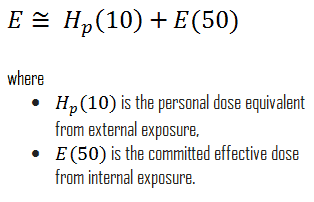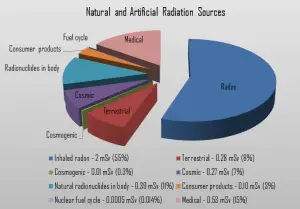There are two distinct groups exposed to manufactured radiation sources. The United Nations Scientific Committee on the Effects of Atomic Radiation (UNSCEAR) itemized types of human exposures as:
- public exposure is the exposure of individual members of the public and the population in general
- occupational radiation exposure, which is the exposure of workers in situations where their exposure is directly related to or required by their work
Occupational Exposure from Man-made Radiation Sources
As was written, occupational exposure is workers’ exposure in situations where their exposure is directly related to or required by their work. According to ICRP, occupational exposure refers to all exposure incurred by workers in the course of their work, except for
- excluded exposures and exposures from exempt activities involving radiation or exempt sources
- any medical exposure
- the normal local natural background radiation.
In general, occupationally exposed individuals work in the following areas:
- Fuel cycle facilities
- Industrial radiography
- Radiology departments (medical)
- Nuclear medicine departments
- Radiation oncology departments
- Nuclear power plants
- Government and university research laboratories
Such individuals are exposed to varying types and amounts of radiation, depending on their jobs and the sources they work. For that reason, most regulatory bodies require to limit occupational exposure to adults working with radioactive material to 5000 mrem (50 mSv) per year. Toward that end, employers carefully monitor the exposure of these individuals using instruments called dosimeters worn on a position of the body representative of its exposure. In most situations of occupational exposure, the effective dose, E, can be derived from operational quantities using the following formula:

The committed dose is a dose quantity that measures the stochastic health risk due to an intake of radioactive material into the human body.
See also: Dose Monitoring
